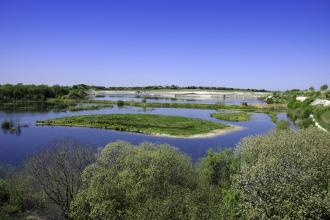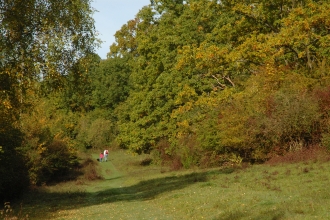January is here again. Grey, cold and wet, it is a melancholic time of year. The days are short and spring seems so far away. The wood displays a monochrome colour scheme, many shades of brown. Trees are defoliated; there is little sign of life. The wilderness seems to be in hibernation.
In contrast, the volunteers at Finemere Wood are bubbling with excitement. They have been at home for a month tucking into Christmas pudding and mince pies. Sugar levels are high. The woodland workers are happy to be back; it is time to get those bodies moving and to catch up on stories of the festive season.







